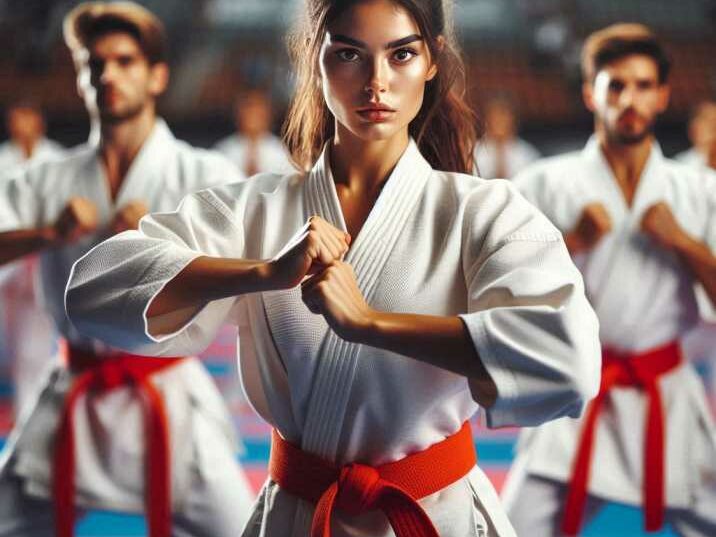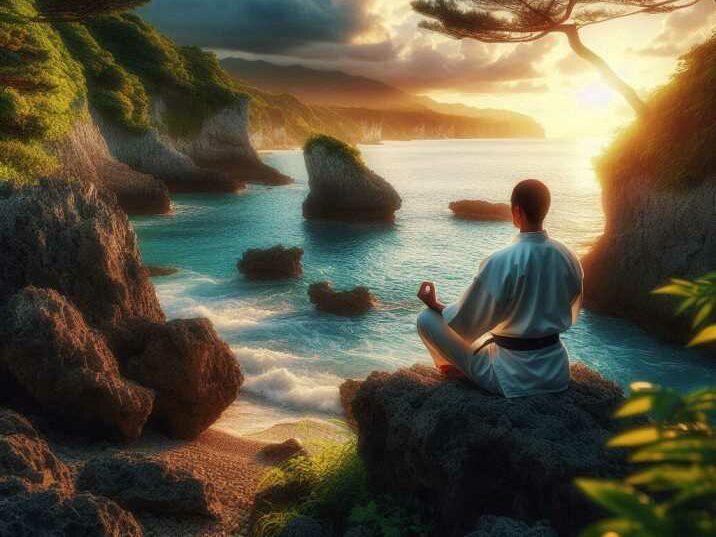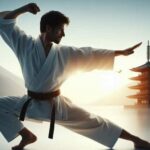Karate is a fascinating martial art practiced worldwide. But many people wonder, “Karate martial arts originated from which country?” In this article, we will explore the origins of Karate, how it evolved, and its journey to becoming a globally recognized martial art. We’ll also delve into interesting aspects of Karate, making it easy for everyone to understand, even an 11-year-old student.
Table of Contents
Table of Contents
- Introduction
- The Birthplace of Karate: Okinawa, Japan
- Historical Development of Karate in Okinawa
- Spread of Karate to Mainland Japan
- Global Spread of Karate
- Principles and Philosophy of Karate
- Popular Karate Styles
- Modern Karate Competitions
- The Cultural Impact of Karate
- Frequently Asked Questions
Introduction
Karate martial arts originated from which country? This is a question that sparks curiosity among many martial arts enthusiasts. Karate, as we know it today, has a rich history and cultural significance that traces back to Okinawa, Japan. Let’s journey through time to understand how this powerful and disciplined martial art came into existence.

The Birthplace of Karate: Okinawa, Japan
Okinawa: The Cradle of Karate
Karate originated in Okinawa, a small island located in the southern part of Japan. Okinawa has a unique cultural and historical background that contributed to the development of this martial art. The island’s strategic location made it a cultural melting pot, influencing the local martial arts practices.
Historical Influences
The roots of Karate can be traced back to the indigenous martial arts of Okinawa, which were influenced by Chinese martial arts. During the Ryukyu Kingdom period, Okinawa was a hub for trade and cultural exchange between Japan, China, and Southeast Asia. This cross-cultural interaction played a crucial role in shaping the techniques and philosophy of Karate.
Historical Development of Karate in Okinawa
Early Martial Arts in Okinawa
Before the formalization of Karate, Okinawa had its own fighting systems known as “Tode” or “Te,” which means “hand” in Japanese. These systems were a blend of indigenous Okinawan techniques and Chinese martial arts brought by traders and scholars.

The Ban on Weapons
In the 17th century, the Japanese Satsuma clan occupied Okinawa and imposed a ban on weapons. This led the Okinawans to develop and refine their unarmed combat techniques, which later evolved into Karate. The need for self-defense without weapons became a driving force behind the advancement of Karate.
The Three Main Styles: Shuri-te, Naha-te, and Tomari-te
Karate in Okinawa eventually split into three main styles based on different regions: Shuri-te, Naha-te, and Tomari-te. Each style had its own unique techniques and philosophies. Shuri-te focused on quick and linear movements, Naha-te emphasized strong stances and breathing techniques, while Tomari-te incorporated elements from both Shuri-te and Naha-te.
Spread of Karate to Mainland Japan
Gichin Funakoshi: The Father of Modern Karate
The journey of Karate to mainland Japan is closely associated with Gichin Funakoshi, often referred to as the father of modern Karate. In the early 20th century, Funakoshi introduced Karate to Japan through demonstrations and teachings. He founded the Shotokan style, which became one of the most popular Karate styles in the world.
Formalization and Recognition
Karate gained formal recognition in Japan and became part of the physical education curriculum in schools. The establishment of Karate organizations and the standardization of techniques helped in promoting and preserving the art.
The Role of the Japan Karate Association (JKA)
The Japan Karate Association (JKA) played a significant role in the global spread of Karate. The JKA promoted Karate through international competitions, seminars, and the training of instructors who then spread Karate across the globe.
Global Spread of Karate
Karate in the United States
After World War II, Karate found its way to the United States through Japanese immigrants and American soldiers who had trained in Japan. The popularity of Karate grew rapidly in the 1960s and 1970s, partly due to the influence of martial arts movies and television shows.
Karate in Europe and Beyond
Karate also spread to Europe and other parts of the world, establishing a strong presence in countries like France, the United Kingdom, and Brazil. Today, Karate is practiced in over 190 countries and is recognized as an Olympic sport.
Principles and Philosophy of Karate
The Dojo Kun: Guiding Principles
Karate is not just about physical techniques; it also emphasizes mental and spiritual development. The Dojo Kun, or the guiding principles of Karate, include:
- Seek perfection of character
- Be faithful
- Endeavor
- Respect others
- Refrain from violent behavior
The Importance of Kata
Kata, or forms, are a crucial aspect of Karate training. They are predetermined sequences of movements that simulate combat situations. Kata helps in developing technique, strength, and discipline.
Popular Karate Styles
Shotokan Karate
Shotokan is one of the most widely practiced Karate styles. It emphasizes long, deep stances and powerful, linear techniques. Shotokan practitioners often perform kihon (basics), kata (forms), and kumite (sparring) in their training.
Goju-Ryu Karate
Goju-Ryu combines hard and soft techniques, focusing on close-quarter combat and breathing control. The name “Goju” means “hard-soft,” reflecting the style’s balance of strong strikes and fluid movements.
Shito-Ryu Karate
Shito-Ryu is known for its diverse range of techniques, blending elements from both Shuri-te and Naha-te. It includes a wide variety of kata and emphasizes speed and agility.
Wado-Ryu Karate
Wado-Ryu, meaning “way of harmony,” integrates Karate with Jujitsu techniques. It focuses on body shifting to avoid attacks and uses fluid, circular movements.
Modern Karate Competitions
Olympic Karate
Karate made its debut as an Olympic sport in the Tokyo 2020 Olympics. The inclusion of Karate in the Olympics has further increased its global visibility and popularity.
World Karate Federation (WKF)
The World Karate Federation (WKF) is the largest governing body for Karate competitions. It organizes international events, including the World Karate Championships, which attract top athletes from around the world.
Traditional vs. Sport Karate
While sport Karate focuses on competition and performance, traditional Karate emphasizes self-defense and personal development. Both aspects are important and contribute to the richness of Karate as a martial art.
The Cultural Impact of Karate
Karate in Popular Culture
Karate has significantly influenced popular culture, especially through movies and television shows. Films like “The Karate Kid” and actors like Bruce Lee have brought Karate into the global spotlight, inspiring generations to take up martial arts.
Karate’s Role in Education
In many countries, Karate is integrated into school curriculums as a way to teach discipline, respect, and self-confidence. The principles of Karate align well with educational goals, making it a valuable addition to physical education programs.
Conclusion
Karate martial arts originated from Okinawa, Japan, a place rich in cultural and historical influences. From its early development blending Okinawan and Chinese martial arts to its refinement during the weapons ban, Karate emerged as a powerful form of self-defense.
Figures like Gichin Funakoshi were pivotal in bringing Karate to mainland Japan and the world, establishing it as a respected martial art focused on both physical and spiritual growth. Today, Karate is practiced globally and is an Olympic sport, promoting values such as discipline, respect, and perseverance.
Understanding Karate’s origins deepens appreciation for its techniques and philosophies, highlighting its role in fostering harmony between mind, body, and spirit.
Frequently Asked Questions
1. Karate martial arts originated from which country?
- Karate originated from Okinawa, Japan.
2. What are the main styles of Karate?
- The main styles of Karate include Shotokan, Goju-Ryu, Shito-Ryu, and Wado-Ryu.
3. Is Karate an Olympic sport?
- Yes, Karate made its debut in the Olympics at the Tokyo 2020 Games.
4. What is the Dojo Kun in Karate?
- The Dojo Kun are guiding principles that include seeking perfection of character, being faithful, endeavoring, respecting others, and refraining from violent behavior.
5. How did Karate spread globally?
- Karate spread globally through Japanese immigrants, American soldiers, international competitions, and the influence of martial arts movies.


